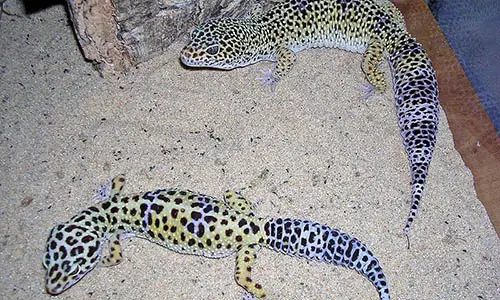Geckos are lizards, hailing from the class Reptilia and are present at places with warm climate all over the world. They are colorful and have many unique physical characteristics that help them to survive the predators. Geckos adapt themselves to the environment they live in and are, therefore, highly diverse. There are a total of 5,600 species of lizard on our Earth, out of which more than 1,500 species come from the gecko infraorder known as Gekkota. Geckos are found in a wide variety of habitats including rocky deserts, mountains, rainforests, grasslands, and even in houses in urban areas. Being cold-blooded animals, geckos cannot retain any heat in their bodies and look up to the sun to get their bodies warmed so as to survive. One cannot find geckos in the cold regions of the Arctic and the Antarctic, North America, Asia (North) and Europe.
Here, we go through some unique facts about geckos:
- Geckos are nocturnal animals which mean they are more active at night. The lens present in each iris of geckos becomes large when it is dark and makes their eyes over 350 times more sensitive to light than those of humans. So, they have an excellent night vision. They hide themselves during daytime and hunt for insects (food) at night time.
- The tail of geckos helps them to climb branches of trees by balancing their body weight. Most of the gecko species are able to shed their tails so as to defend themselves against an attack by a predator. This process is known as autotomy. The tail grows back itself, afterwards. Their tails also store fat and help them to hide.
- Geckos possess small bodies ranging from 1.6 to 60 cm. They have large heads and eyes. They are not able to blink as they do not have movable eyelids. They use their tongue to keep their eyes clean and moist.
- Geckos have the ability to climb walls, hang upside down and apparently, stick to anything. They can run up and down a tree in anyway, even with the head downwards. They possess millions of tiny hairs on their toes known as setae, which collectively, make the gecko’s toes like a washboard. Each of these seta contains thousands of thinner hair-like structures having flat caps at the end called spatulae. These spatulae use “Van der Waals” force to enable the gecko’s feet to stick to objects. Van der Waals forces are the sum of attractive and repulsive forces between atoms, molecules, surfaces and other inter-molecular forces.
- In many parts of the world, geckos are treated as a sign of good luck to have them in homes. Geckos are common in homes in warm regions of the world and they help in getting rid of insects by eating them. They kill mosquitoes, which would have, otherwise, spread malaria and other diseases.
- Geckos have a variable range of body colors. Some geckos have clear and bright colors while others have dark and dull colors. Their camouflaging colors help them hide among rocks. Some geckos can also change the color of their bodies.
- Geckos shed their skins at fixed intervals of time. Different species do so in their own respective methods. The geckos eat their skin after having shed the same, not to waste the nutrients the skin has stored. Leopard geckos like to shed every two to four weeks.
- While attracting a mate, or protecting themselves against predators, they use chirping and clicking sounds. Female geckos lay eggs, normally, in 4 to 5 weeks after mating and the eggs take about 40-60 days to hatch. The lifespan of a gecko is up to 10 years or even more for many species. The longest lifespan of a gecko under captivity has been 27 years.
- Geckos have about 100 teeth which they can replace every 3 to 4 months.
- The largest gecko, the Tokay Gecko, can be up to 35 cm long.
- The smallest gecko is the Jaragua Sphaero which is not more than 16 mm long.
- The Ptychozoon is the flying gecko which can fly up to 60 meters and are found in South Asia.
- The Pygopodidae geckos look like snakes, having long and elegant bodies with only lingering hind legs and no forelegs.











Leave a Reply